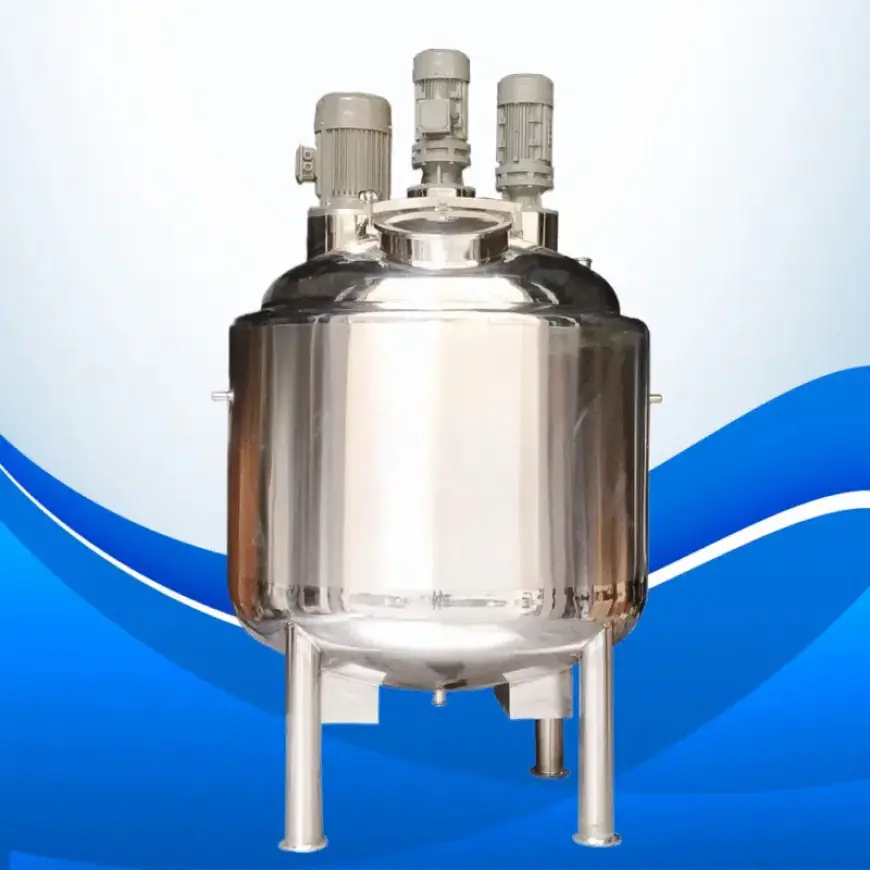Chemical Processing Mixing Tanks: Corrosion Resistance That Matters
Learn about corrosion resistance in chemical processing mixing tanks. Explore material selection, protective coatings, design considerations, and maintenance strategies for optimal performance and longevity.

Chemical processing facilities face significant challenges when selecting equipment that can withstand aggressive environments while maintaining operational efficiency. Among the most critical components in these facilities are mixing tanks, which serve as the backbone of countless industrial processes. The selection of appropriate corrosion-resistant materials and designs directly impacts safety, productivity, and long-term operational costs.
Understanding Corrosion in Chemical Processing Environments
The Nature of Chemical Corrosion
Chemical processing environments present unique challenges that can rapidly degrade standard materials. Corrosion occurs when chemical substances react with tank materials, leading to deterioration that compromises structural integrity. This process can manifest in various forms, including uniform corrosion, pitting, crevice corrosion, and stress corrosion cracking. Each type presents distinct risks that must be addressed through proper material selection and design considerations.
Factors Influencing Corrosion Rates
Multiple variables contribute to the severity of corrosion in industrial mixing applications. Temperature fluctuations can accelerate chemical reactions, while pH levels determine the aggressiveness of the chemical environment. Concentration levels of corrosive substances, exposure duration, and mechanical stresses from mixing operations all play crucial roles in determining the rate of material degradation. Understanding these factors enables engineers to make informed decisions about tank specifications and maintenance schedules.
Material Selection for Corrosion Resistance
Stainless Steel Alloys
Stainless steel remains a popular choice for many chemical processing applications due to its inherent corrosion resistance properties. Different grades offer varying levels of protection against specific chemicals. Grade 316L provides excellent resistance to most organic and inorganic chemicals, while higher-grade alloys like 2205 duplex stainless steel offer superior strength and corrosion resistance in chloride environments. The chromium content in these alloys forms a passive oxide layer that self-repairs when damaged, providing continuous protection.
Specialized Alloy Options
Beyond standard stainless steel, specialized alloys offer enhanced protection in extreme environments. Hastelloy alloys demonstrate exceptional resistance to reducing environments and high-temperature applications. Inconel provides outstanding performance in oxidizing conditions and high-stress environments. These premium materials command higher initial costs but deliver superior longevity in challenging applications where standard materials would fail prematurely.
Advanced Protective Coatings and Linings
Polymer Lining Systems
Modern polymer linings provide cost-effective solutions for corrosion protection in mixing tank applications. Fluoropolymer linings, including PTFE and PFA, offer chemical inertness across a broad spectrum of aggressive chemicals. These materials maintain their properties across wide temperature ranges and provide smooth surfaces that facilitate cleaning and prevent contamination. Proper installation techniques ensure long-term adhesion and performance.
Ceramic and Glass Linings
Glass-lined steel tanks combine the structural strength of carbon steel with the chemical resistance of glass. This combination provides excellent protection against most acids and many organic compounds while offering visual inspection capabilities. Ceramic linings offer similar benefits with enhanced thermal shock resistance, making them suitable for applications involving rapid temperature changes.
Design Considerations for Enhanced Durability
Weld Quality and Heat Treatment
The quality of welds significantly impacts the corrosion resistance of stainless steel mixing tanks. Proper welding techniques, including the use of appropriate filler materials and post-weld heat treatment, ensure that weld zones maintain corrosion resistance comparable to the base material. Inadequate welding can create galvanic couples and stress concentrations that accelerate localized corrosion.
Surface Finish Requirements
Surface finish plays a critical role in corrosion resistance and cleanability. Electropolished surfaces provide the highest level of corrosion resistance by removing surface imperfections and creating a uniform passive layer. Different surface finishes are appropriate for various applications, with pharmaceutical and food processing requiring mirror finishes while general chemical processing may accept lower finish levels.
Maintenance Strategies for Long-Term Performance
Regular Inspection Protocols
Implementing systematic inspection programs helps identify corrosion issues before they compromise tank integrity. Visual inspections can detect surface discoloration, pitting, and coating degradation. Non-destructive testing methods, including ultrasonic thickness measurements and dye penetrant testing, provide detailed information about material condition without damaging the tank structure.
Preventive Maintenance Practices
Regular cleaning procedures remove corrosive residues that could accelerate material degradation. Proper passivation treatments restore the protective oxide layer on stainless steel surfaces after maintenance activities. Monitoring and controlling process parameters within design specifications prevents exposure to conditions that could exceed material capabilities.
Cost-Benefit Analysis of Corrosion Resistance
Initial Investment Considerations
While high-performance materials and protective systems require substantial initial investments, they often provide superior long-term value through reduced maintenance costs and extended service life. The selection process should consider the total cost of ownership, including material costs, fabrication complexity, maintenance requirements, and potential downtime costs associated with premature failure.
Long-Term Economic Impact
Corrosion-related failures can result in significant costs beyond equipment replacement. Production losses, environmental cleanup, and safety incidents can far exceed the initial cost savings from selecting less resistant materials. A comprehensive economic analysis should account for these potential costs when evaluating material options for critical mixing tank applications.
Future Developments in Corrosion Resistance
Emerging Material Technologies
Research continues into advanced materials that offer improved corrosion resistance and performance characteristics. Nanostructured coatings provide enhanced barrier properties while maintaining thin application thickness. Advanced composite materials combine multiple protective mechanisms to address specific application challenges.
Smart Monitoring Systems
Integration of sensor technologies enables real-time monitoring of corrosion processes and material condition. These systems can detect early signs of degradation and alert operators to changing conditions that may require process adjustments or maintenance interventions.
The selection of appropriate corrosion-resistant materials and designs for chemical processing mixing tanks requires careful consideration of multiple factors. Understanding the specific chemical environment, evaluating material options, and implementing proper maintenance practices ensures reliable operation and optimal return on investment. As technology continues advancing, new solutions will emerge to address the evolving challenges of chemical processing applications.
What's Your Reaction?
 Like
0
Like
0
 Dislike
0
Dislike
0
 Love
0
Love
0
 Funny
0
Funny
0
 Angry
0
Angry
0
 Sad
0
Sad
0
 Wow
0
Wow
0


















































